The Grey-headed Flying-fox (Pteropus poliocephalus) is an endemic mammal and the largest Australian bat. It has a wingspan that can reach one metre and body mass up to one kilogram. It has pale grey fur on its head, rusty-coloured fur encircling the neck, grey belly fur with flecks of white and ginger, thick leg fur extending to the ankle and black wings.
The Grey-headed Flying-fox is the only flying-fox species that has a permanent presence in South Australia, and it is a nationally threatened species.
Life history cycle
The young Grey-headed Flying-foxs are usually born in September to October and are carried by the mother for the first three weeks, clinging to her teat with their special curved milk teeth and gripping her fur with their strong claws. As they grow larger and become too heavy to carry on feeding expeditions, they are left behind in special 'creches' in the maternity camp. After about three months the young are able to fly and by five to six months of age they begin to feed independently.
Distribution
There are at least 11 Grey-headed Flying-fox roosting areas or camps in Victoria, 8 of these being in East Gippsland which also has the largest permanent and birthing camp at Dowell Creek near Mallacoota.
Most Victorian records are concentrated between March-June but may extend from September to July (Menkhorst 1995; Van der Ree et al. 2006)
Size
The grey-headed flying fox is the largest of the flying foxes. The bats at the Aquarium are about 11 inches in length.
Distinctive feature
Fur on its legs that extends to its ankles.
Colour
Dark grey to brown body, with lighter grey fur on its head and golden-orange fur encircling its neck. Its wings are black.
Habitat
Flying foxes will utilise most habitat types which provide food, particularly eucalyptus woodlands and forests. If appropriate flowering and fruiting trees are present, bats will have no hesitation entering towns and cities, including central business districts. They are quite social animals forming huge roosts, sometimes many thousands strong. These are very noisy and smelly places with neighbours constantly squabbling over their own little territories.
Diet
These bats feed on the blossoms and fruit of fruit trees, and play an important role in the local ecosystem. By feasting on the fruit of many different species of trees in their environment, the cross-pollination that occurs through the bats excretion of seeds enables the fruit trees to reproduce.
This natural benefit of their diet, however, is little comfort for fruit farmers who neighbor the species camps. The flying fox eats not only the ripened fruit, but also the blossoms and nectar of trees.
Interesting Facts
- A group of grey-headed flying foxes is known as a colony.
- Females have 1 baby a year.
- Bats are the only mammals capable of true flight, wheras other mammals can only glide.
- Grey-headed flying foxes are found along the east coast of Australia and their numbers are dropping mainly due to habitat loss.
- They mainly eat fruit, nectar and pollen from a wide range of trees. They have an important role to play in the environment by pollinating trees and spreading seeds a long distance in their droppings.

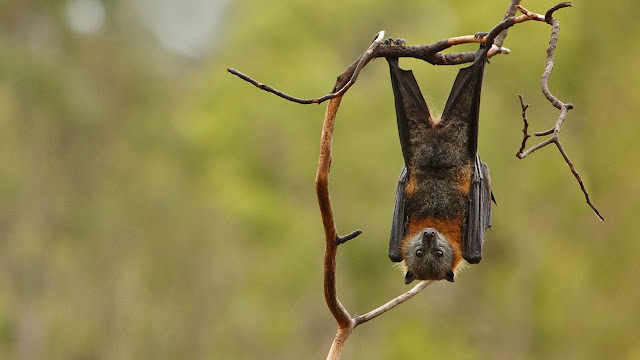
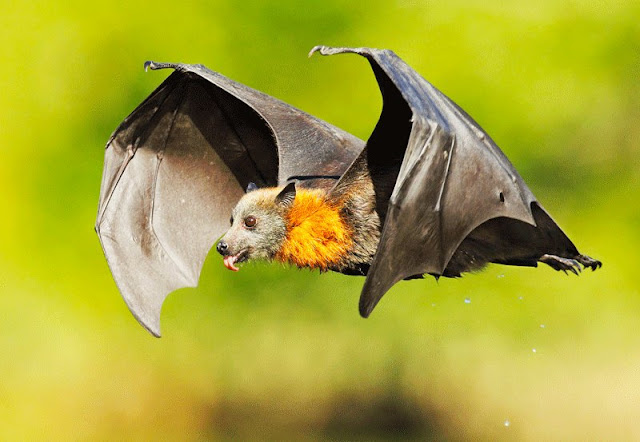
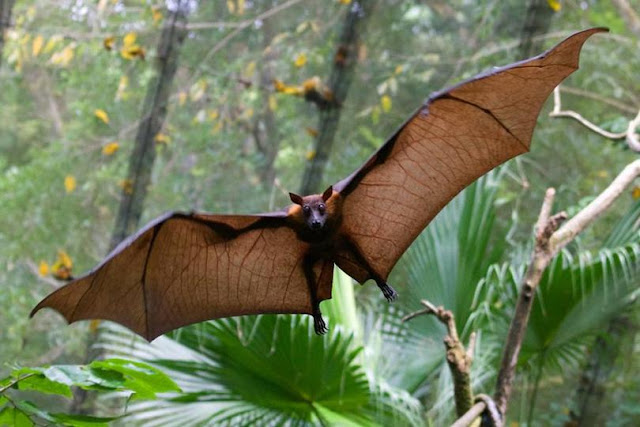
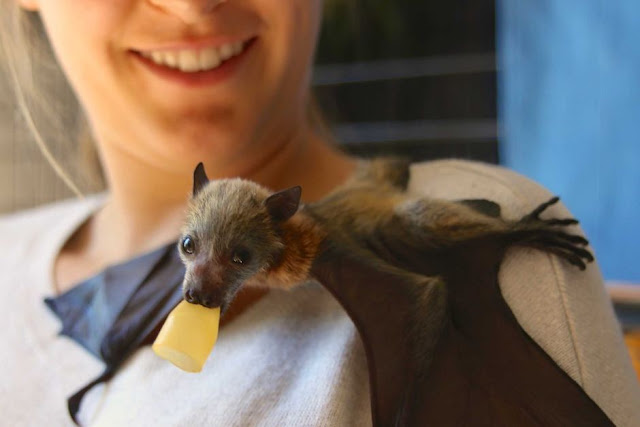
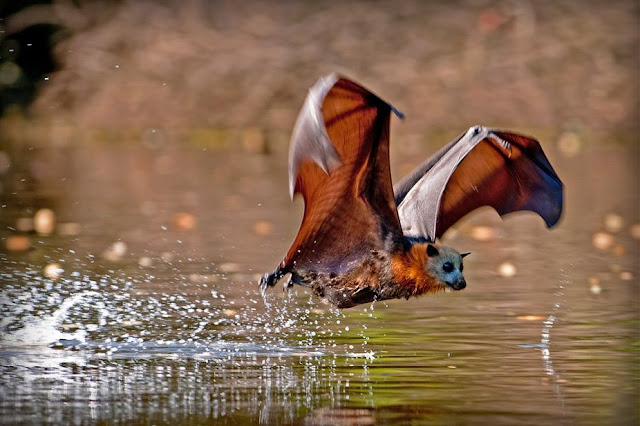
Comments
Post a Comment